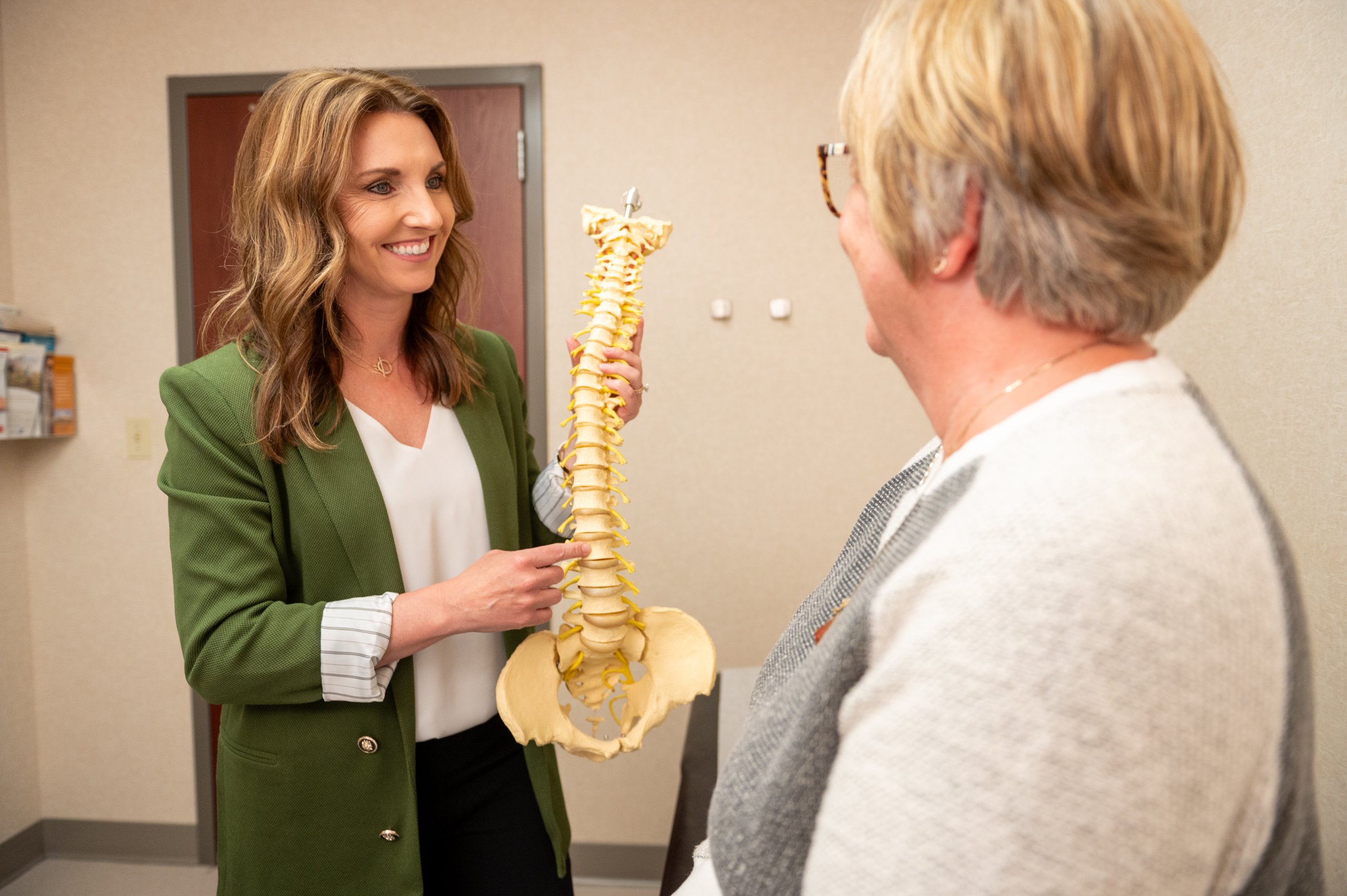
BONE & OSTEOPOROSIS CLINIC
Osteoporosis Overview
Osteoporosis, or porous bone, is a complex condition that can affect both men and women at any age, often without symptoms or pain. Over time, bones become weak and brittle, increasing the risk of fragility fractures in areas like the spine, hip, wrist, shoulder, and ankle. These fractures can be painful, debilitating, and, in severe cases, life-threatening.
ONE in FOUR Men over the age of 50 will break a bone due to Osteoporosis.
ONE in TWO Women over the age of 50 will break a bone due to Osteoporosis.
Are You at Risk for Osteoporosis & Bone Loss?
Several factors can increase your risk of osteoporosis:
Gender – Women are at a higher risk than men.
Age – The risk increases as you age.
Body Size – Small, thin-boned individuals are more susceptible.
Ethnicity – Caucasian and Asian women have the highest risk.
Family History – A family history of osteoporosis increases your likelihood of developing the condition.
Strategies for Bone Health
Our bone health strategies focus on:
Identifying risk factors such as:
Previous fractures
Family history
Medications
Diseases of malabsorption
Rheumatoid arthritis
Early menopause
Tendency to fall
Conducting tests, including:
Fracture risk assessment
DXA (dual-energy x-ray absorptiometry) bone density scans
Laboratory tests
Encouraging appropriate exercise
Promoting a healthy diet and supplementation
Supporting positive lifestyle habits
Offering medication or treatment therapy to:
Increase bone density
Ensure adherence to treatment with regular re-evaluation
OFC’s Bone Health Services
Our comprehensive bone health services include:
One-on-One Assessment – Personalized evaluation to identify your risk factors.
Lab Tests – Coordination of lab work to check for underlying causes of bone loss.
DXA Bone Density Scans – High-precision x-ray scans to measure bone mineral density.
Specialized Treatment – Consultation, physical therapy, and medication (when appropriate).
DXA Scan: What to Expect
A DXA scan measures your bone mineral density and bone loss. This quick, painless scan uses low-dose radiation and takes less than 10 minutes. Your bone density score is a key indicator of your bone strength. Lower-than-normal bone density for your age signals a higher risk of osteoporosis and fractures.
Important Reminder: Stop taking calcium supplements, multivitamins, and antacids (such as TUMS) 48 hours before your scan.
Benefits of Early Diagnosis and Treatment
Prevent fractures – Early diagnosis and treatment can reduce the likelihood of fractures.
Improve surgical outcomes – Better bone health leads to faster recovery and improved results after surgery.
Reduce future fracture risk – Treating osteoporosis after an initial fracture can lower the risk of subsequent fractures by up to 50%.
Enhance quality of life – Strengthening your bones can prevent the decline in health and mobility often associated with fractures.
Lower healthcare costs – Preventive care reduces the need for costly treatments in the future.


